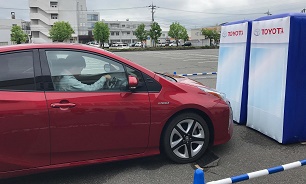Toyota Safety Sense Reduces Rear-End Collisions by 90 percent
Nothing ruins a morning commute like a rear-end crash.

Khodrocar - Rear-end collisions are one of the most common types of accidents on roads in the United States. Thank you, distracted driving. For as frustrating and sometimes deadly these accidents can be, Toyota says its Safety Sense and ICS (Intelligent Clearance Sonar) packages can reduce rear-end collisions by up to 90 percent.
According to the National Transportation Safety Board, 1.7 million rear-end crashes occurred in 2012, resulting in 1,700 fatalities and 500,000 people injured. One way to mitigate those crashes is through technology. Alone, the Toyota Safety Sense technology reduces such crashes by approximately 50 percent, according to calculations Toyota performed.
The Japanese automaker hopes to increase the number of vehicles sold with Toyota Safety Sense and ICS to approximately 90 percent by the end of the 2018 fiscal year. It’s like the automaker had read the 2015 NTSB report that threw some shade towards carmakers regarding collisions, and the need for adequate safety technology.
In that report, the NTSB said, "Slow and insufficient action on the part of the National Highway Traffic Safety Administration (NHTSA) to develop performance standards for these technologies and require them in passenger and commercial vehicles, as well as a lack of incentives for manufacturers, has contributed to the ongoing and unacceptable frequency of rear-end crashes.”
However, sensors and gadgetry only go so far.
Part of Toyota’s data collection included studying incidents in parking garages. An Insurance Institute for Highway Safety (IIHS) study found backup cameras more effective at preventing rear-end collisions when backing up than parking sensors. Granted, the study still wasn’t too pleasing – 56 percent of participants using the backup camera still hit the toddler-sized cardboard cutout. Only one in 16 drivers using parking sensors didn’t end up hitting the cutout.
Even if every car on the road came equipped with the latest safety technology, rear-end collisions would still occur. However, if we could reduce them by a fraction of what Toyota is estimating, there’d be more lives saved and fewer injuries. That’s something we should we working toward.
Source: Motor1
Latest News


